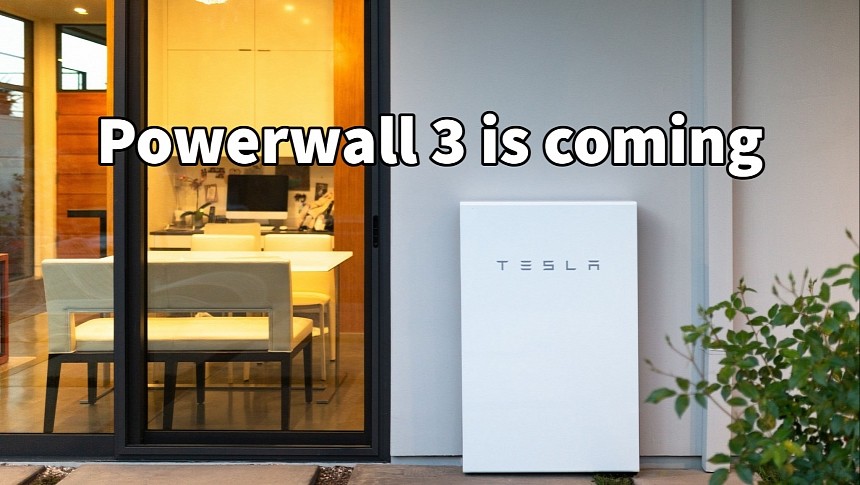Tesla will soon launch the Powerwall 3, its battery storage solution, and rumors indicate it's preparing a radical change. Rumor has it that Tesla will ditch NMC (nickel-manganese-cobalt) cells and opt instead for LFP (lithium-iron-phosphate) prismatic cells.
Although most people know Tesla as an electric vehicle maker, Elon Musk's company is much more than that. Its energy business is probably the most underrated, although it's also very promising. Tesla sells electricity through its Supercharger network or directly to homes in certain areas. It's also the producer of solar panels, solar roofs, and Powerwall battery storage systems, providing complete on-grid and off-grid integrated solutions. Last but not least, it makes the Megapack storage batteries used for large-scale energy projects.
Having a Powerwall home battery and solar panels is the first step toward energy independence. Until recently, a Li-Ion cell crunch forced Tesla to only sell Powerwall batteries together with solar panels or solar roofs. However, battery production is no longer a problem, and people can buy Powerwall batteries even without solar panels. If you're wondering what they're good for when you have no solar or wind energy to store, the Powerwall is still a robust backup solution when the grid fails. Especially during disasters, Powerwall batteries proved a lifesaver.
Tesla is about to launch the Powerwall 3, almost seven years after the second generation hit the market in November 2016. The information is based on a certification obtained by Tesla with several utility companies. While the certification doesn't offer details about the technical characteristics of the third-generation Powerwall, Drive Tesla has confirmed that the new storage battery will introduce a significant change under the hood.
More specifically, Tesla has decided to switch the batteries used inside the Powerwall 3 from NMC to LFP prismatic cells. Unlike the former, LFP cells use abundant materials like iron instead of nickel and cobalt. This makes them much cheaper, and also more durable and safer. The downside is they are heavier and, thus, less energy dense, but this should not be a problem for a stationary battery like the Powerwall. Tesla already uses LFP cells in the Model 3 RWD and Model Y RWD and has recently started using them for the Megapack storage systems.
The Powerwall 3 will have the same storage capacity as the current generation, at 13.5 kWh. It will offer a power boost, though, with up to a 14.5-kW peak backup power instead of the 10 kW provided by the current generation. The battery pack design will not change, although Drive Tesla sources claim the new battery would have a "significantly smaller form factor" than the Powerwall 2. This is intriguing, considering the lower energy density of LFP cells.
There's no information regarding pricing, but we expect the new generation to become more affordable thanks to using LFP cells. The Powerwall 2 sells for $9,200 for a single unit, $17,200 for two, and $25,200 for three.
Having a Powerwall home battery and solar panels is the first step toward energy independence. Until recently, a Li-Ion cell crunch forced Tesla to only sell Powerwall batteries together with solar panels or solar roofs. However, battery production is no longer a problem, and people can buy Powerwall batteries even without solar panels. If you're wondering what they're good for when you have no solar or wind energy to store, the Powerwall is still a robust backup solution when the grid fails. Especially during disasters, Powerwall batteries proved a lifesaver.
Tesla is about to launch the Powerwall 3, almost seven years after the second generation hit the market in November 2016. The information is based on a certification obtained by Tesla with several utility companies. While the certification doesn't offer details about the technical characteristics of the third-generation Powerwall, Drive Tesla has confirmed that the new storage battery will introduce a significant change under the hood.
More specifically, Tesla has decided to switch the batteries used inside the Powerwall 3 from NMC to LFP prismatic cells. Unlike the former, LFP cells use abundant materials like iron instead of nickel and cobalt. This makes them much cheaper, and also more durable and safer. The downside is they are heavier and, thus, less energy dense, but this should not be a problem for a stationary battery like the Powerwall. Tesla already uses LFP cells in the Model 3 RWD and Model Y RWD and has recently started using them for the Megapack storage systems.
The Powerwall 3 will have the same storage capacity as the current generation, at 13.5 kWh. It will offer a power boost, though, with up to a 14.5-kW peak backup power instead of the 10 kW provided by the current generation. The battery pack design will not change, although Drive Tesla sources claim the new battery would have a "significantly smaller form factor" than the Powerwall 2. This is intriguing, considering the lower energy density of LFP cells.
There's no information regarding pricing, but we expect the new generation to become more affordable thanks to using LFP cells. The Powerwall 2 sells for $9,200 for a single unit, $17,200 for two, and $25,200 for three.












